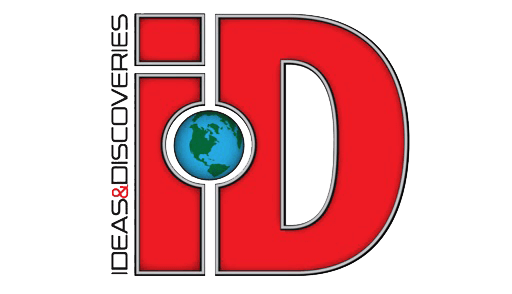This new moon of March 2025 will create a partial solar eclipse visible in the northeastern part of North America, much of Europe and Russia; one will even be able to see the moon cover a sliver of the sun as far south as Morocco.
A new moon happens when the sun, moon and Earth are lined up. From the earthbound observer’s point of view, the sun and the moon share the same celestial longitude, a projection of the Earth’s longitude lines on the sky. Usually, the moon passes above or below the sun, but this time it will be in front of the sun, obscuring part of the disk and creating a partial solar eclipse.
The exact moment of the new moon, when Earth, the sun and the moon are perfectly aligned, occurs on March 29, at 5:58 a.m. EDT (1058 UTC), in New York, according to the U.S. Naval Observatory.
Unlike a total solar eclipse, part of the sun is still visible during a partial solar eclipse, so there is no darkening of the sky or visible solar corona. Even so, if one takes proper precautions one can see a “crescent” sun as the moon moves in front of it. How much gets covered depends on one’s location.
The eclipse starts at 0850 UTC, when the moon touches the western edge of the sun; and ends at 1243 UTC. Both of these times are for the extreme edges of eclipse’s visibility; the actual starting and end times will vary.
Remember, NEVER look at the sun without proper eye protection and never use regular sunglasses to observe the sun. It is never safe to look directly at the sun’s rays, even if the sun is partly obscured, because they contain harmful ultraviolet (UV) and infrared (IR) rays that can damage your eye’s retina and even cause blindness. The only safe way to look directly at the sun is through specifically designed solar filters, using solar eclipse glasses for direct viewing and solar filters for telescopes and binoculars.
The maximum eclipse, where the moon covers some 90 percent or more of the sun, occurs in northeastern Canada in an area of Quebec and Nunavut. For example, in the town of Iqaluit, the capital of Nunavut, the eclipse starts before sunrise, at 5:57 a.m. local time. Sunrise is at 6:02 a.m., and the maximum eclipse is at 6:51 a.m., when about 90% of the sun’s disk will be blocked out by the moon. If one observes the sun through protective glasses one will see a thin crescent; with the naked eye the sun is still too bright to look at if the sky is clear. At maximum the sun will be a bit under five degrees high in the east. The eclipse ends in Iqaluit at 7:47 a.m.
A bit less remote is Québec city, where the moon will cover about 72 percent of the sun’s disk. Here too, the eclipse itself begins before sunrise, which is at 6:29 a.m. local time. Maximum eclipse is at 6:32 a.m., and the eclipse ends at 7:14 a.m.
In Montreal, the eclipse starts at 5:29 a.m. local time, and sunrise is at 6:39 a.m. a.m. Maximum eclipse, with about half of the sun’s diameter covered, is at 6:42 a.m. The eclipse ends at 7:13 a.m.
In locations where the moon is moving in front of the sun near sunrise (or sunset), observers can see the “solar horns” or “devil’s horns” – a crescent shaped sun near the horizon. This can be especially apparent if clouds or haze are dimming the sun enough to reduce the glare.
In the United States, Boston will see 40 percent of the sun covered, with the sun rising at 6:31 a.m. local time; maximum eclipse is at 6:38 a.m. and the eclipse ends at 7:07 a.m. New York City observers will see the moon obscure 22 percent of the sun’s disk by 6:46 a.m., just two minutes after sunrise at 6:44 a.m., the eclipse ends at 7:04 a.m.
European observers will be able to catch the start of the eclipse as the sun will already be above the horizon. In Reykjavik, the moon touches the sun at 10:05 a.m., and covers 68 percent of it at 11:05 a.m. with the eclipse ending at 12:07 p.m. local time. In London the eclipse starts at 10:07 a.m. local time, reaches maximum (with 30 percent of the sun’s disk obscured) at 11:03 a.m. and ends at 12:00 p.m.
Visible Planets
Even if one can’t catch the solar eclipse, the night of the new moon offers planets visible in the evening from mid-northern latitudes. On March 29 sunset is at 7:18 p.m. EDT in New York City, according to the U.S. Naval Observatory. By about 8 p.m. the sky gets dark enough that the first stars and planets come out, and one can see Jupiter in the west-southwest, about 52 degrees above the horizon. Mars will be in the south, about 73 degrees high. Jupiter sets at 12:49 a.m. March 30, and Mars at 3:43 a.m.
Venus will rise ahead of the sun; the planet is just emerging into the predawn sky. From New York it will be very difficult to see as the planet rises at 5:45 a.m. Eastern on March 29 and the sun follows at 6:44 a.m.; Venus will only be 10 degrees high at sunrise on March 29.
Saturn and Mercury will be lost in the solar glare; both planets will become more visible in the predawn sky in the coming weeks and months.
Closer to the equator, sunsets are actually earlier, because the day lengths are closer to 12 hours and equatorial countries don’t use daylight savings. In Quito, Ecuador, sunset is at 6:21 p.m. on March 29. By 7 p.m. local time, the sky is getting dark and Jupiter is about 49 degrees high in the northwestern sky, while Mars is at 65 degrees above the northern horizon. Jupiter sets at 10:44 p.m., and Mars at 1:22 a.m. March 30.
As one gets into the mid-latitudes of the Southern Hemisphere, Jupiter and Mars are lower than they are in similar northern latitudes. In Buenos Aires, sunset on March 29 is at 6:50 p.m. local time, and by 7:30 p.m. local time Jupiter is 25 degrees above the northwestern horizon and Mars is 30 degrees high, almost due north. Jupiter sets at 10:23 p.m., Mars at 1:00 a.m. on March 30.
The “upside down” nature of the sky in the Southern Hemisphere means it is just possible for an observer to catch Saturn as sunrises are later (7:03 a.m. March 29) as the Southern Hemisphere winter months are approaching. Saturn rises at 5:57 a.m. in Buenos Aires, and civil twilight (when the sun is between 6 degrees below the horizon) starts at 6:38 a.m. At that point Saturn will be 8 degrees high in the east; with a flat, unobscured horizon and a clear sky it is just possible to see the ringed planet.
Constellations
In mid-northern latitudes, the later sunsets (especially in the U.S., due to daylight savings time) the sky will get completely dark by about 8:30 p.m. In the southwest Orion is moving towards the horizon; by midnight he will have mostly set, but one can still spot the three distinctive stars of Orion’s Belt, with Betelgeuse above and to the left of them and Rigel below and to the right. To the left of Orion one can spot Sirius, the brightest star in Earth’s night sky and the alpha star of Canis Major, the Big Dog. Looking directly upwards from Sirius, a bit more than halfway up the sky, one sees Procyon, the bright star of Canis Minor, the Little Dog.
Looking to the north, the Big Dipper, an asterism that makes up part of Ursa Major, the Great Bear, will be high in the northeast, with the “bowl” facing north (to the left), and downward, and the “handle” pointing to the horizon and to the right. One can use the Big Dipper to find Polaris, the Pole Star that is a hallmark of celestial navigation using the “pointers” – these will be the two highest altitude stars, called Dubhe and Merak, with Dubhe on the left. Draw a line from those two stars to the left (north) and one encounters Polaris.
Less well-known is that the Big Dipper points to Leo the Lion, which is fully above the horizon in the east. Draw a line from Dubhe through Merak and one hits the middle rough trapezoid formed by the stars in Leo. The two stars at the top of the trapezoid are Algeiba (Gamma Leonis) and Regulus (Alpha Leonis) with Regulus being the brighter of the two. Towards the horizon are Delta Leonis (called Zosma) on the left and Theta Leonis (called Al-Haratan) on the right.
Below those two stars, and more directly below Al Haratan, is Denebola, or Beta Leonis, which marks the Lion’s tail. If one looks at the top of the trapezoid again, starting at Algeiba, there is a group of three fainter stars that makes a curved shape, called the Sickle, and that is Leo’s head and mane.
As the night progresses observers the rest of the springtime stars make their appearance; by 11 p.m. Virgo is fully above the horizon and one can find her using the Big Dipper, which by this time is above Polaris at the 12 o’clock position. Using the handle one can “arc to Arcturus” by drawing a sweeping arc to Arcturus, an orange-yellow star in Boötes, the Herdsman, and then keep going to reach Spica, the brightest star in Virgo.
In the Southern Hemisphere’s mid latitudes, it is fully dark by about 8:00 p.m. The Southern Cross is rising in the southeast; to the right of it – southwards – one can see Centaurus, the Centaur, and in it Alpha Centauri, also called Rigil Kentaurus, the sun’s nearest stellar neighbor – it’s easy to find because the short crossbar of the Cross points right to it. Near to Alpha Centauri — below and to the right — is Hadar, the second-brightest star in Centaurus.
Looking up from the Southern Cross, about two thirds of the way to the zenith, is Canopus, a bright white star that shows Carina, the Keel, one of the three constellations that made up the legendary Argo, the ship Jason sailed.
In the southwest, about the same distance to the right of due south as the Southern Cross is to the left, and only a little higher, is Achernar, the end of Eridanus, the River. The River’s stars are not particularly bright, but one can follow the winding trail to a point right near Rigel, the foot of Orion, who is in the northwestern sky.
Editor’s Note: If you snap a photo of the partial solar eclipse and would like to share it with Space.com’s readers, send your photo(s), comments, and your name and location to [email protected].

